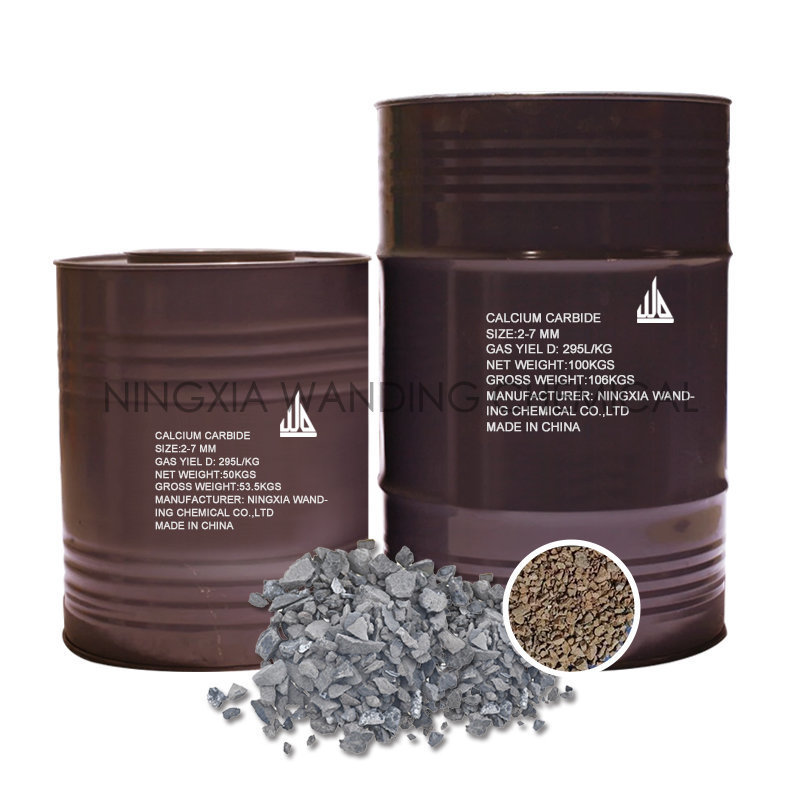The Structural Formula of Calcium Carbide: Insights into Its Chemical Composition and Applications
Release Time:
2025-03-01
Calcium carbide, with the chemical formula CaC₂, is a significant compound in the metallurgy and non-metallic mineral industries, particularly in the production of acetylene gas and calcium cyanamide. Its structural formula reveals a simple yet fascinating arrangement of atoms, which contributes to its unique properties and wide range of applications. At the atomic level, the structure of calcium
Calcium carbide, with the chemical formula CaC₂, is a significant compound in the metallurgy and non-metallic mineral industries, particularly in the production of acetylene gas and calcium cyanamide. Its structural formula reveals a simple yet fascinating arrangement of atoms, which contributes to its unique properties and wide range of applications.
At the atomic level, the structure of calcium carbide consists of one calcium atom (Ca) bonded to two carbon atoms (C). The carbon atoms are arranged in a linear form, creating a diatomic molecule that is characteristic of calcium carbide. The bonding in CaC₂ is primarily ionic, where calcium, being a metal, donates two electrons to the carbon atoms, which are non-metals. This transfer of electrons results in the formation of Ca²⁺ ions and C₂²⁻ ions, where the carbide ion (C₂²⁻) is a vital component that contributes to the compound's reactivity and utility.
One of the most notable aspects of calcium carbide is its reactivity with water, producing acetylene gas (C₂H₂) and calcium hydroxide (Ca(OH)₂) in a highly exothermic reaction. This property has led to its extensive use in welding and cutting applications, where acetylene serves as a fuel gas. Due to this reaction, calcium carbide has become an essential compound in various industrial processes, particularly in the synthesis of organic compounds.
Additionally, calcium carbide plays a role in the manufacture of calcium cyanamide, a nitrogen-rich fertilizer. This compound is produced through a reaction between calcium carbide and nitrogen at high temperatures. Calcium cyanamide is essential in agriculture, providing an effective source of nitrogen for crops while contributing to soil health.
The structural formula of calcium carbide also provides insights into its stability and handling requirements. As a chemical that can react vigorously with moisture, it necessitates careful storage and handling protocols to prevent unwanted reactions. Industries utilizing calcium carbide must ensure that it is kept in dry conditions and away from sources of moisture to maintain its integrity and safety.
In conclusion, understanding the structural formula of calcium carbide is essential for professionals in the metallurgy and non-metallic mineral sectors. Its unique atomic arrangement and reactivity offer valuable insights into its numerous applications, from welding to agricultural fertilizers. As industries continue to innovate and leverage the properties of calcium carbide, comprehending its chemical structure will remain a cornerstone for optimizing its use in various applications.
At the atomic level, the structure of calcium carbide consists of one calcium atom (Ca) bonded to two carbon atoms (C). The carbon atoms are arranged in a linear form, creating a diatomic molecule that is characteristic of calcium carbide. The bonding in CaC₂ is primarily ionic, where calcium, being a metal, donates two electrons to the carbon atoms, which are non-metals. This transfer of electrons results in the formation of Ca²⁺ ions and C₂²⁻ ions, where the carbide ion (C₂²⁻) is a vital component that contributes to the compound's reactivity and utility.
One of the most notable aspects of calcium carbide is its reactivity with water, producing acetylene gas (C₂H₂) and calcium hydroxide (Ca(OH)₂) in a highly exothermic reaction. This property has led to its extensive use in welding and cutting applications, where acetylene serves as a fuel gas. Due to this reaction, calcium carbide has become an essential compound in various industrial processes, particularly in the synthesis of organic compounds.
Additionally, calcium carbide plays a role in the manufacture of calcium cyanamide, a nitrogen-rich fertilizer. This compound is produced through a reaction between calcium carbide and nitrogen at high temperatures. Calcium cyanamide is essential in agriculture, providing an effective source of nitrogen for crops while contributing to soil health.
The structural formula of calcium carbide also provides insights into its stability and handling requirements. As a chemical that can react vigorously with moisture, it necessitates careful storage and handling protocols to prevent unwanted reactions. Industries utilizing calcium carbide must ensure that it is kept in dry conditions and away from sources of moisture to maintain its integrity and safety.
In conclusion, understanding the structural formula of calcium carbide is essential for professionals in the metallurgy and non-metallic mineral sectors. Its unique atomic arrangement and reactivity offer valuable insights into its numerous applications, from welding to agricultural fertilizers. As industries continue to innovate and leverage the properties of calcium carbide, comprehending its chemical structure will remain a cornerstone for optimizing its use in various applications.
News Hotspot


















